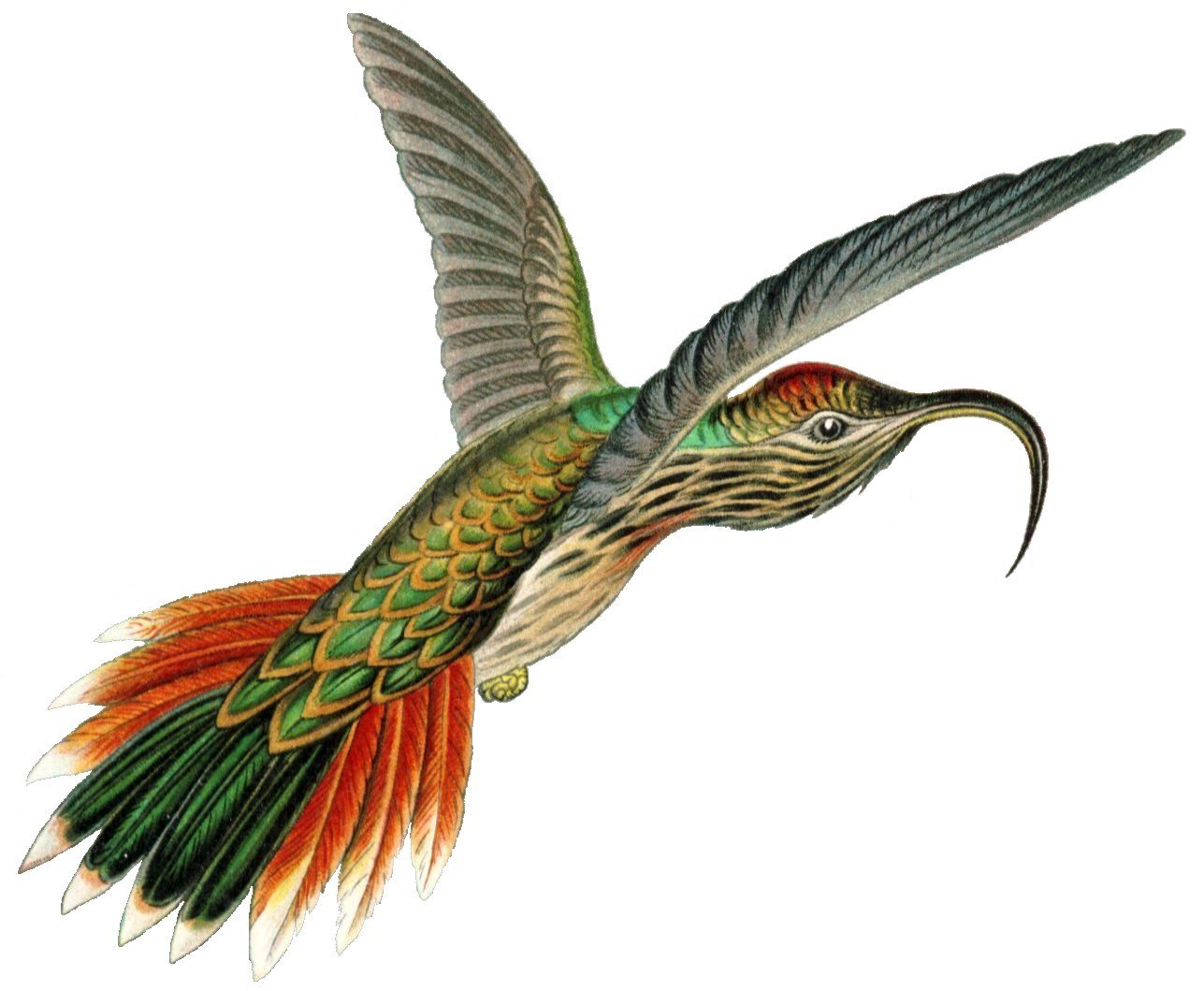- Buff-tailed Sicklebill
:"The
Black-billed Sicklebill ("Epimachus albertisi"), abird of paradise from New Guinea, is also sometimes called "Buff-tailed Sicklebill"."Taxobox
name = Buff-tailed Sicklebill

image_width = 220px
status = LC
status_system = iucn3.1
regnum =Animalia
phylum =Chordata
classis =Aves
subclassis =Neornithes
infraclassis =Neognathae
unranked_ordo =Cypselomorphae
ordo =Apodiformes
familia =Trochilidae
subfamilia =Phaethornithinae
genus = "Eutoxeres "
species = "E. condamini"
binomial = "Eutoxeres condamini"
binomial_authority = (Bourcier,1851 )
synonyms ="Trochilus condamini" Bourcier, 1851The Buff-tailed Sicklebill ("Eutoxeres condamini") is a
species of hermit hummingbird from the lowerAndes and adjacent west Amazonian lowlands from southernColombia and northernEcuador toPeru andBolivia .Hinkelmann (1999)]Description
With a total length of 5-6 in (13-15 cm) and weighing 0.28-0.44 oz (8-12.5 g), it is a relatively large
hummingbird . Males and females are virtually identical, differing only in size (especially wing measurements), with the females being some 20% smaller. Its upperparts areiridescent dull greenish, while the underparts are whitish, densely streaked with dusky. The neck-side has a relatively faint blue patch. The tips of therectrices (tail feathers) are white, and there is a naked stripe on top of the head (but this is usually concealed). The most conspicuous features, however, are those thecommon name refers to: the bill is strongly decurved, and the outer three rectrices on each side are deep buff, best visible from below. Immature birds have light-tippedremiges (pinions), hardly any blue on the neck, and lack the naked crown stripe.Hatchling s have black skin and grey down.There are two
subspecies which are not very distinct and almost form a continuous cline, with an extensive intergradation zone in northern Peru:* "Eutoxeres condamini condamini" (Bourcier, 1851) – Northern Buff-tailed Sicklebill:Colombia and Ecuador. Bill longer, lower belly much streaked
* "Eutoxeres condamini gracilis" Berlepsch & Stolzmann, 1902 – Southern Buff-tailed Sicklebill:Central Peru to Bolivia. Bill shorter, lower belly less streakedThe buff outer remiges are the most reliable trait for separating the Buff-tailed Sicklebill from the only other member of the
genus "Eutoxeres ", theWhite-tipped Sicklebill ("E. aquila"), which has a more northerly distribution. The "Eutoxeres" species are somewhatsympatric however, for example in the foothills ofPutumayo aroundMocoa , ColombiaSalaman "et al." (2002)] .Ecology
It is restricted to the undergrowth of
humid forested and woodedhabitat s, recorded from 590-10,800 ft (180-3,300 m) ASL. It will tolerate more habitat disturbance than itscongener , regularly occurring inplantation s,bamboo stands and open habitat where populations are healthy, though it still prefers natural vegetation. Nothing precise is known about its movements, though it is presumed that the birds are non-migratory. The peculiar bill is anadaption to the shape of certain flowers, namely of thegenera "Centropogon " and "Heliconia ". It feeds mainly bytrap-lining . In addition to nectar, it will also catch smallarthropods .The two white eggs are laid in a nest which is attached to the underside of a leaf, a few meters above ground. In the southern Cordillera Oriental of Colombia, nest construction was observed in July or August, while birds with enlarged
gonad s were found in Peru from September to November. Only the female incubates; the incubation period is 16-18 days and the youngfledge 22-24 days after hatching. They start to breed when they are 1-2 years old.Generally fairly common though inconspicuous and easily overlooked, it is considered a species of
Least Concern byBirdLife International [BLI (2004)] . This species is most easily seen in the mixed habitat of old and young forest and small-scale logging at theNapo River in eastern Ecuador.Footnotes
References
*|year=2004|id=48226|title=Eutoxeres condamini|downloaded=4 July 2007 Database entry includes justification for why this species is of least concern.
* (1999): 3. Buff-tailed Sicklebill. "In:" aut|del Hoyo, Josep; Elliott, Andrew & Sargatal, Jordi (eds.): "Handbook of Birds of the World " (Volume 5: Barn-owls to Hummingbirds): 537, plate 45. Lynx Edicions, Barcelona. ISBN 84-87334-25-3
* (2002): New and noteworthy bird records from the east slope of the andes of Colombia. "Caldasia" 24(1): 157-189. [http://www.unal.edu.co/icn/publicaciones/caldasia/24(1)/240111.pdf PDF fulltext]External links
* [http://vireo.acnatsci.org/search.html?Form=Search&SEARCHBY=Common&KEYWORDS=buff-tailed+sicklebill&showwhat=images&AGE=All&SEX=All&ACT=All&Search=Search&VIEW=All&ORIENTATION=All&RESULTS=24 Buff-tailed Sicklebill photo gallery] VIREO [http://vireo.acnatsci.org/species_image.php?species=Eutoxeres+condamini Photo-High Res-(Close-up)]
Wikimedia Foundation. 2010.
